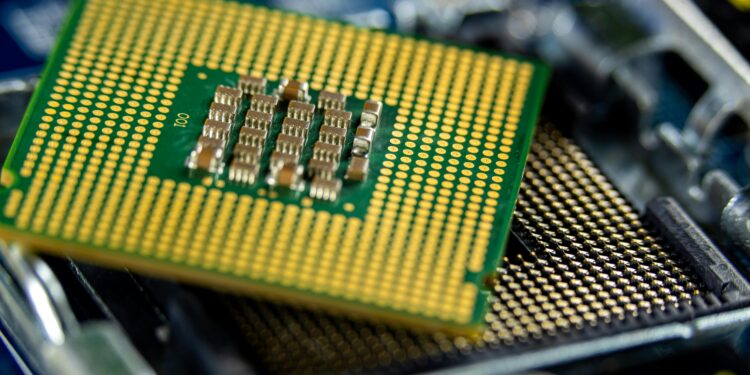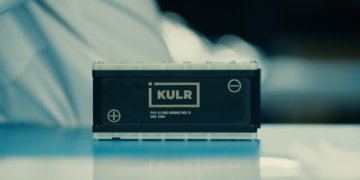Server Share Gains and AI Expansion Counterbalance Gaming and PC Sector Weakness
Advanced Micro Devices (AMD) is set to announce its third-quarter earnings in the week of October 28, 2024. While the company’s sales and earnings per share (EPS) for the third quarter are expected to meet expectations, there are signs that fourth-quarter projections may be slightly optimistic. Consensus estimates for fourth-quarter sales of $7.6 billion and an EPS of $1.17 appear high, prompting some analysts to trim their forecasts to $7.5 billion. The adjustment is primarily based on more modest assumptions for the company’s PC and gaming segments.
Despite these concerns, AMD continues to make strides in artificial intelligence (AI). Over the past year, the company has grown its AI-related business from zero to approximately $4 billion. However, investor expectations for its MI300 product family have consistently exceeded achievable results. Initial estimates for around $8 billion in MI300 sales have since been revised down to $5 billion. Looking ahead, sales for AMD’s MI3XX family in 2025 are projected to reach around $10 billion, but this remains a stretch target in the eyes of some analysts.
Data Center Growth and AI Push
AMD’s Data Center (DC) segment, which accounts for 49% of the company’s revenue, is a crucial growth driver. In the second quarter of 2024, the segment saw a significant 114% year-over-year increase, and AMD’s EPYC server processors continue to benefit from the struggles of its rival, Intel. AMD’s server market share hit 34% in the second quarter, and analysts expect further gains in 2025, driven by the launch of the Turin server CPU in the fourth quarter of this year. Turin’s cores are set to increase by 50-100% compared to the previous generation, a development that could boost AMD’s segment growth by over 25% next year.
In the AI space, AMD’s MI300 and upcoming MI325 are expected to play key roles in competing with Nvidia’s dominant position in the accelerator market. The MI325, set for a fourth-quarter 2024 launch, will offer twice the memory capacity of its predecessor. Although initial volumes will be small, production is expected to ramp up in early 2025. However, AMD faces an uphill battle against Nvidia’s well-established CUDA software ecosystem and powerful AI accelerator lineup.
Modest Growth in the PC and Embedded Segments
The Client segment, which includes AMD’s PC business and accounts for 26% of its revenue, saw 9% quarter-over-quarter growth in the second quarter of 2024. The year-over-year growth was a significant 50%, although this was driven by easy comparisons to weaker performance in the previous year. For the third quarter, analysts estimate that the Client segment will grow another 11% quarter-over-quarter, largely due to seasonal factors. AMD recently launched its Ryzen AI PRO 300 processors, which are expected to power over 100 models of enterprise PCs in 2025. However, the overall PC market remains flat, with units projected to stay around 260 million.
The Embedded segment, representing 15% of AMD’s revenue, rebounded slightly in the second quarter with a 2% quarter-over-quarter increase, though it was still down 41% year-over-year. Analysts expect this segment to continue its gradual recovery, with a 3% quarter-over-quarter increase in the third quarter. Design wins in the embedded business have risen by 40% year-over-year, which bodes well for long-term growth.
In contrast, the Gaming segment, which contributes 11% of AMD’s revenue, has struggled. It experienced a 30% quarter-over-quarter decline in the second quarter, with a 59% year-over-year drop due to softness in the semi-custom business. This weakness is expected to persist as the PlayStation 5 and Xbox consoles enter their fifth year, a period typically associated with slowing sales. Additionally, AMD has exited the high-performance segment of the PC gaming market, which is dominated by Nvidia, to focus on entry-level and mid-tier offerings.
Financial Performance and Valuation
AMD reported free cash flow of $439 million in the second quarter, representing 8% of revenue. The company is in the process of acquiring ZT Systems for $4.9 billion, a deal that is expected to close in the first half of 2025. While AMD plans to divest ZT’s manufacturing arm, it intends to keep its systems business to accelerate development of rack-level solutions for data centers.
Despite these developments, AMD’s valuation remains a point of concern. The company’s stock is up 12% year-to-date, but it trades at 26 times its expected 2026 earnings per share, compared to the group average of 24 times. With high expectations for AI growth and continued competition from Nvidia and Intel, some analysts remain cautious about the stock’s risk-reward balance. The persistent demand for data center AI solutions may keep investor expectations elevated, but the company’s ability to meet these targets remains uncertain.
Investment Outlook
While AMD continues to show strong performance in areas such as data centers and AI, the company faces significant challenges in the PC and gaming markets. The acquisition of ZT Systems and growth in the server space are positive signs, but AMD’s uphill battle against Nvidia’s dominance in the AI accelerator market and broader competition in CPUs could limit its growth potential. Investors are likely to keep a close eye on the company’s AI developments and market share gains in the coming quarters.
You might like this article:ASML Lowers 2025 Revenue Forecast Amid Semiconductor Industry Slowdown











